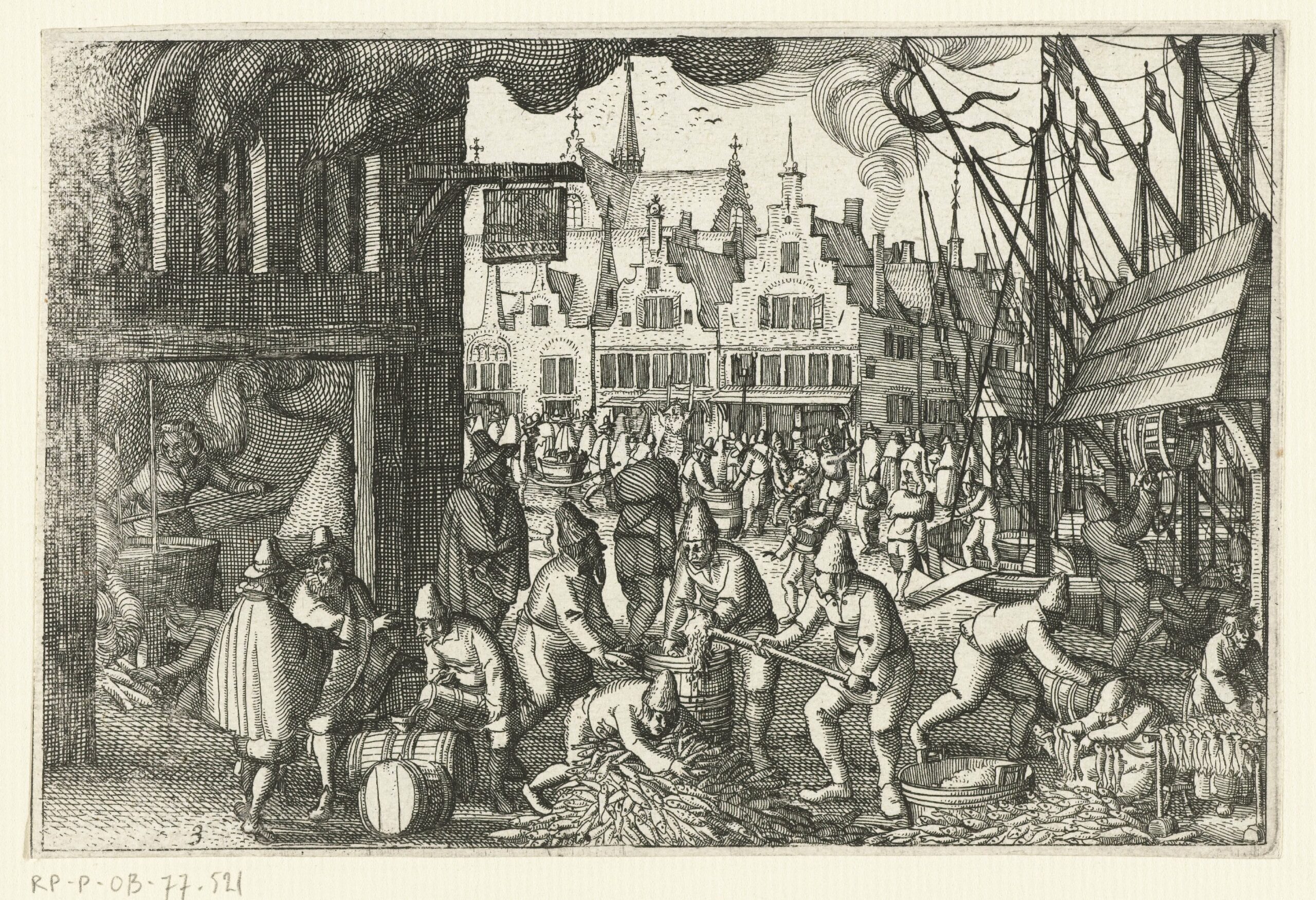PRESERVARE
| Duration: | 2024-2029 |
| Subsidy provider: | European Research Council (ERC) |
| Subsidy size: | 2 million euros |
| Remarkable: | We combine archival research, digital analysis and historical reconstructions to understand how early modern food preservation techniques were developed and used. |
| Valorisation: | We chronicle the ins and outs of PRESERVARE through our newsletter, social media (Bluesky and LinkedIn) and on preservare.eu. In the spring of 2025, we co-organize an online seminar series on the history of food preservation. |
Large-scale conservation of perishable foodstuffs in the Low Countries, 1600-1800
Our early modern ancestors preserved and transported large quantities of food over long periods of time and distances in a world without electric refrigeration. Food preservation techniques such as fermentation, smoking and pickling played a major role. PRESERVARE investigates how this knowledge was developed and transmitted.
Various groups of people collaborated in the development of food preservation technologies: scientists, craftsmen and laymen. The project shows that food preservation technologies could develop successfully thanks to the combination of everyday and embodied knowledge of practical experts – think of cheese makers, brewers and butchers – and the knowledge of scientists. Their craftsmanship and insights complemented each other and were essential for optimizing food preservation technologies.
 Processing and smoking herring at the Haringpakkerstoren, circa 1600. The gutting, smoking, and packing of herring. In the foreground on the right, herring is being gutted. To the left, a herring smokehouse with a sign bearing the name Souterij. In the centre, the herring is being packed into barrels. Collection Rijksmuseum.
Processing and smoking herring at the Haringpakkerstoren, circa 1600. The gutting, smoking, and packing of herring. In the foreground on the right, herring is being gutted. To the left, a herring smokehouse with a sign bearing the name Souterij. In the centre, the herring is being packed into barrels. Collection Rijksmuseum.
Knowledge about food preservation was rarely written down and can be found in many different places: in handwritten sources, printed books, images, archaeological sources, and in practical applications. Mapping these different types of knowledge is therefore ambitious. While scientists published their findings in scientific publications, craftsmen and professionals often did not write down their knowledge. They passed it on from generation to generation by doing, often through oral instructions in the workshop.
A unique combination of methods
PRESERVARE seizes the lack of an abundance of written sources as an opportunity to use other research methods. In this way, the project hopes to offer researchers of historical knowledge practices starting points in their attempts to shed light on the interaction between scientific knowledge, on the one hand, and practical knowledge, on the other. In other knowledge domains too, bringing together a formal top-down and informal bottom-up perspective is a challenge.
PRESERVARE’s innovative methodology consists of a unique combination of methods. In the first phase of the research, we combine archival research and digital techniques to compile a source corpus that is as diverse as possible. These sources, ranging from scientific treatises to recipes and animal bones, are then analysed using classical historical source interpretation (also known as close reading) and archaeological techniques. Finally, we perform physical reconstructions of historical food preservation practices, so that we can better understand what these techniques entailed.
The project team consists of members with backgrounds in the history of science and knowledge, biology, archaeology and data sciences: Marieke Hendriksen (PI), Carmen Schmechel (postdoctoral researcher), Thijs Elfrink and Tijmen Moesker (PhD candidates), Jakob Jung (intern) and Edurne De Wilde (project coordinator). They are assisted by Ger Dijkstra (data curator), several experts from the field of food conservation (advisors for the reconstructions), external co-supervisors for the PhDs, and an international advisory board.

